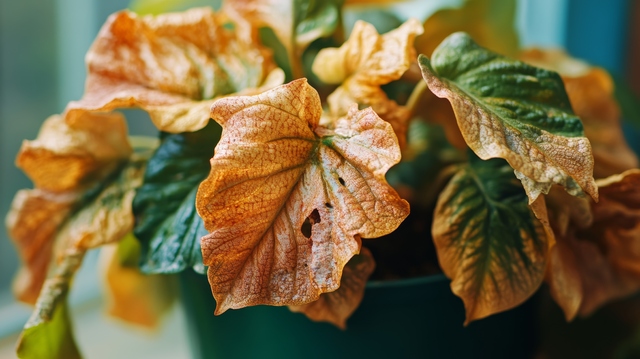
Plants change the energy of a home. They soften edges, filter air, and add quiet life to corners that otherwise feel static. When one dies, it can feel discouraging. Was it too much water? Too little sun? Or simply a plant that struggled from the beginning?
The truth is, every plant has limits. And every plant parent, whether new or experienced, faces the loss of a beloved plant. The important step is knowing what to do when a plant dies: try to recover it if possible, or replace it with something that suits your lifestyle and the plant’s location better. Our plant recovery guide for dying plants will help you become more knowledgeable in recognising when your plant is dying and when there is still room for revival.
Step-by-Step Guide To Recovery or Replacement of Your Dead Plant
Step One: Confirm if the Plant Is Dying
Before discarding, give it some more time.. Plants may appear lifeless, yet they still hold potential.
Check systematically:
Stem test: Gently scratch the bark or stem of the plant. Green beneath the surface indicates life.
Check the roots: Gently remove the plant from the pot. If the roots are firm and pale, they are healthy, and if they are dark, mushy or brittle, they are dead.
Growth signals: Look for small shoots near the soil line. Even if you notice minimal new growth, it could be a sign of resilience.
However, if you notice that these vital signs are missing, it’s time to conclude that your plant has no life left inside to revive.
Step Two: How to Save Your Dying Plant
If you detect signs of revival, your plant recovery process should begin immediately without further ado.
- Prune Your Plant Thoroughly:
Cutting out unwanted parts, such as dead and damaged stems and leaves, helps a plant redirect energy towards its living tissues and sustain the revival process more effectively.
2. Repot with New Soil
You should know that soil degrades over time. Stale and old soil drains poorly, harbours salt, and encourages fungal buildup. Repot into fresh, well-draining soil in a pot that includes drainage holes.
3. Correct Watering
Hydration balance is critical. Soggy soil suffocates roots; overly dry soil halts growth. Water deeply, then allow the top layer to dry before the next cycle.
4. Relocate Strategically
Light determines survival. Check if your plant is receiving too much or too little sunlight and move it to either brighter or more indirect light, which is the ideal condition for many houseplants.
5. Provide Good Nutrition
If the plant doesn’t show fresh growth, feed diluted fertiliser. Avoid strong doses; stressed roots can burn easily.
Revival takes patience. Reviving a dying plant is less about quick fixes and more about making steady adjustments over several weeks.
Step Three: Recognise Plant Mortality Without Guilt
Some plants cannot recover. Accepting this is part of the process. A plant that fails does not define you as neglectful. Even professional growers experience losses.
Understanding the loss frees you from frustration. It creates room for reflection rather than blame. Learn from your mistakes and try again.
Step Four: When It’s Time To Replace Your Dead Plant
You know it’s time to replace your dead plant when its roots have fully decayed, the stems are brittle, and there are no signs of any green.
Disposal can positively contribute to composting and returning nutrients to the soil, thus completing the cycle.
Step Five: The Right Replacement Selection
Not all plants need high maintenance. Choosing hardy species will make the replacement process more rewarding and will also restore your confidence.
Step Six: Learn From Plant Care Mistakes
Every loss provides insight. Contemplate the conditions that led to the decline.
Over-watering: The roots give in, the leaves turn yellow.
Lack of water: Soil pulls away, leaves dry and curl.
Incorrect lighting: Growth becomes leggy, or leaves scorch.
Soil neglect: Compacted medium prevents roots from breathing.
They are not failures; they are lessons influencing your next attempt. Recognising mistakes in plant care will help prevent them from being repeated and foster stronger habits.
Step Seven: Accept Plant Loss
Plants function via cycles. In nature, most plants sprout, grow, flourish, decline, and give back nutrients to the soil. Indoors, the same pattern exists, only condensed.
Losing a plant creates space for something new. Compost the remains, refresh the pot, and allow the next plant to grow where the last one ended.
Dead Plant Recovery Guide: Quick Checklist
Scratch test the stem; check the roots.
Prune, repot, water with care, and adjust lighting.
Monitor for weeks, not days.
If your attempts at recovery fail, replace without hesitation.
Choose hardy and resilient species to replant with confidence. Take note of the previous mistakes to avoid repeating them.
Remember, a dead plant doesn’t mark the end of your ability nor the failure of your effort.
It is simply part of the cycle of keeping living things indoors.
Whether you attempt to revive or replace your dead houseplant, the experience builds knowledge. Over time, you will find a balance between light, water and soil and develop better instincts (green thumbs).
Next time, when the question arises about what to do when a plant dies, the answer should be: observe, try to recover, accept limitations, and move ahead with stronger choices.
Plants may come and go, but what matters is the patience and your knowledge on how to cultivate in learning how to care for them.
Want more useful plant tips and green guides? Follow our Instagram Page and stay tuned for some interesting snippets about plant care.
Want to explore a vast collection of plants online? Visit our website!


